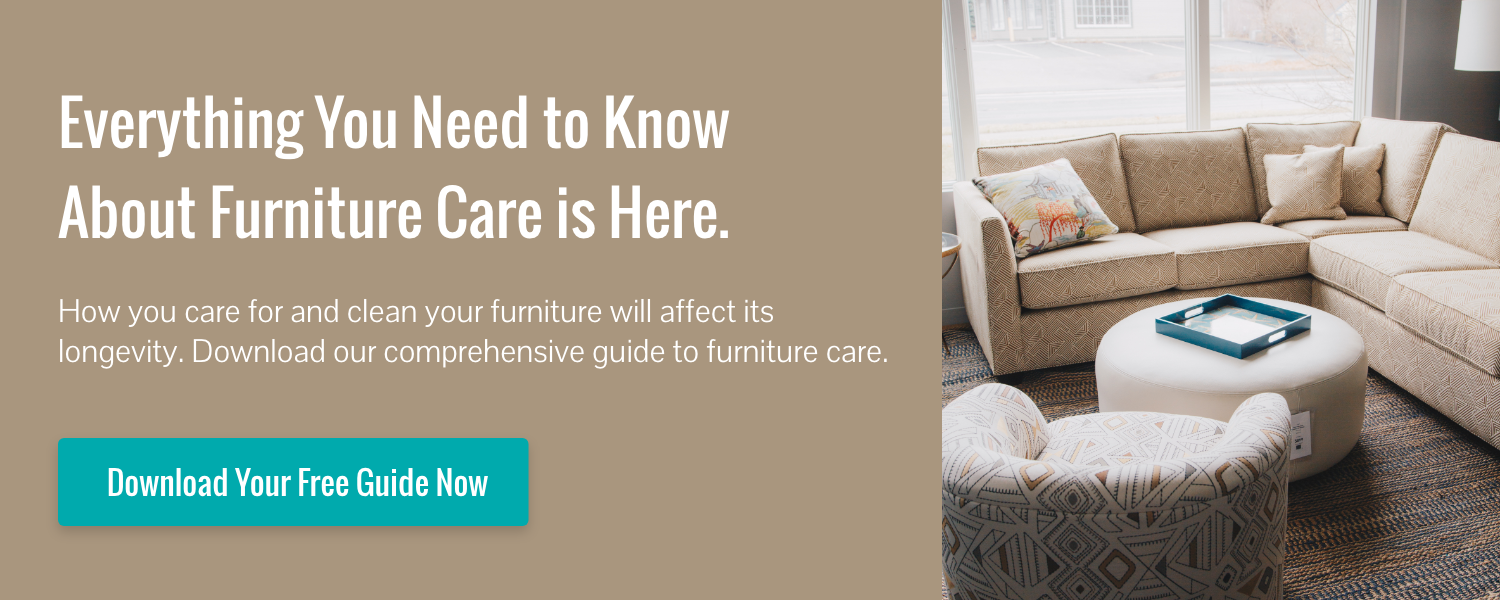04
Aug 2017
There are a lot of variables that go into making a high-quality piece of upholstered furniture. Between quality foam versus down filling for cushions, choosing the right fabric, finding a frame made from solid wood rather than composite - it seems like there's an infinite number of ways to determine the quality of a sofa.
The seating suspension is arguably one of the most important things about a sofa's quality; it's what makes you comfortable when you sit, and keeps your sofa looking fabulous for years to come.
Unfortunately, it's tough to gauge a sofa's seating suspension, especially because it's hidden from sight. What even is eight-way hand-tied suspension, and how is it different from sinuous springs? We love jute rugs, but what about the material on the inside of a sofa?
Eight-way hand-tied
Eight-way hand-tied seating suspension sounds really fancy, but is it? Eight-way hand-tied suspension is labor-intensive and tends to cost more, but offers great support and a soft feel. Some say it's the best "ride" you can get in upholstered seating.
Springs inside the sofa are secured to each other and the frame with twine in eight different spots; the idea is that the web of twine will stop the suspension from shifting and offer continuous support. However, some manufacturers argue that sinuous springs and polypropylene webbing will give you the same effect.
Alas, not all is peachy in eight-way hand-tied land. There is a slight chance strings can break, but that is unlikely to make a significant impact. Additionally, some eight-way hand-tied suspension is created with wire instead of twine - which may not break but can squeak.
Ultimately, you'll see this type of suspension in a lot of high-end sofas. First, verify with a salesperson or the manufacturer that it's the real deal - dupe eight-way hand-tied suspension exists when a manufacturer takes a drop-in system and - and then decide for yourself if it's worth the relatively higher cost.
Sinuous springs
Sinuous springs are arguably the most common type of sofa suspension on the market. What does this type of suspension look like Pieces of metal, spaced a few inches apart, zig-zagging perpendicular to the front of the sofa. The more small turns the metal makes as it crosses the sofa, and the thicker the metal, the more support it'll give, and the longer you can expect it to last.
Sinuous spring suspension tends to feel firmer than eight-way hand-tied.

Drop-in coil springs
Drop-in coil springs are a less labor-intensive version of other types of spring suspension; coils are mounted on a metal frame, which is then added to the furniture as its own single unit, rather than being attached directly to the furniture's frame. The plus side: you get the same kind of spring suspension as eight-way hand-tied at a fraction of the cost.
The downside? A lot of metal-to-metal contacts, meaning you could be squeaking a lot in a lower cost production. It may also be quicker to sag. Pocket coils are basically drop-in coils, except the coils are individually wrapped in fabric.
Webbing: Polypropylene
How would you feel about having seatbelts compose the inside of your couch? Polypropylene webbing is just that: bands of plastic fabric tightly woven together, then attached to the frame with clips or staples. This quality of this type of suspension varies.
Low-quality webbing - like the kind you'd find in a beach chair - won't last long. High-quality webbing - like the kind you'd find in the seats of your car - is well-equipped for a high-level of wear and tear. You're likely to find this kind of webbing in contemporary sofas when there's not enough space between the bottom of the sofa and the floor to accommodate springs.
For example, if you're looking for a sofa that is lifted high off the floor (with tall legs), there's a good chance it's webbed construction.

Webbing: Jute
Ah, the mixed bag of seating suspension. There's a wide range of weights, qualities, and fibers that can be found in jute webbing - meaning that you're never really sure what you're getting, especially because it's hidden! (If the manufacturer wants to cut corners, using jute webbing is an easy way to go about it.)
Ultimately, it is known for sagging faster than any other suspension option and tends to be found in the lowest-quality furniture. If you do purchase jute webbing, make sure that it's at least 11lbs per 144 yards.
So, what now?
It's a lot of information, we know! So now what?
At the highest price point, you'll find eight-way hand-tied seating suspension and high-quality sinuous spring suspension. Sinuous springs are the most common in mid-range sofas, and a lot of budget sofas will use low-quality webbing in their various materials.
There are high, mid- and low-quality versions of every suspension type. It's ultimately up to you to decide what you want to spend, but know this: regardless of what you choose, a seating suspension that is well-made will keep your sofa from bottoming out. Further, a well-made seating suspension will offer a firmer, longer-lasting comfort.
Remember this, too: the quality of construction is more important than the type of suspension. A poorly done or dupe eight-way hand-tied will last no longer than the cheapest webbing. On that note, it ultimately may be worth paying more for a longer-lasting and well-made seating suspension. After all, the perfect fabric won't mean much if the sofa it covers doesn't last.
Curious about what Circle Furniture offers in terms of seating suspension? Most of our seating suspension is eight-way hand tied, sinuous spring, or high-quality webbing.
Check out our online selection of sofas and loveseats, but we recommend you come by one of our six locations and see for yourself.
SaveSave SaveSave SaveSave SaveSave 
